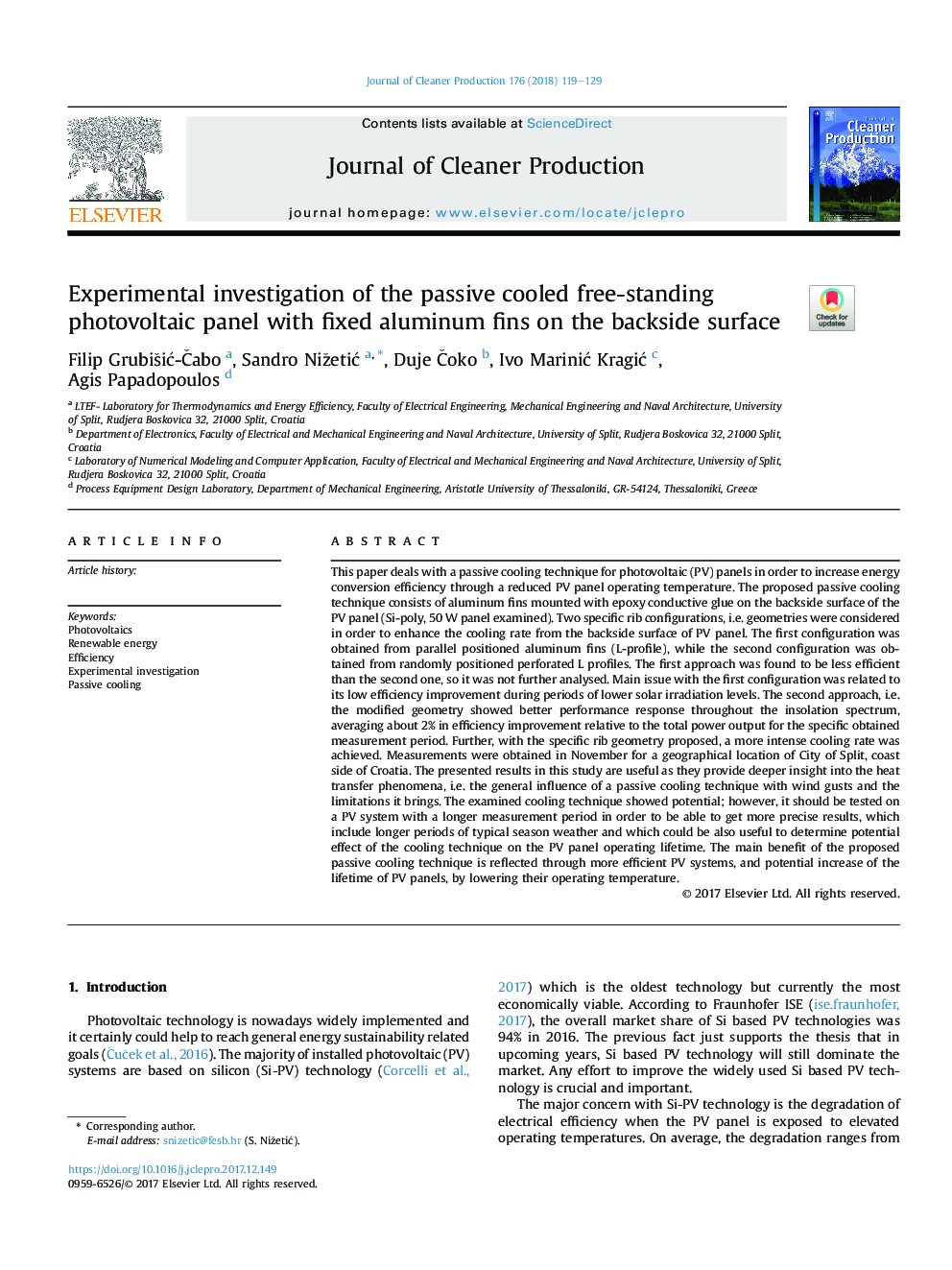| کد مقاله | کد نشریه | سال انتشار | مقاله انگلیسی | نسخه تمام متن |
|---|---|---|---|---|
| 8098886 | 1522077 | 2018 | 11 صفحه PDF | دانلود رایگان |
عنوان انگلیسی مقاله ISI
Experimental investigation of the passive cooled free-standing photovoltaic panel with fixed aluminum fins on the backside surface
ترجمه فارسی عنوان
بررسی تجربی پانل فتوولتائیک خنثی خنک کننده با پایه آلومینیومی ثابت بر روی سطح پشتی
دانلود مقاله + سفارش ترجمه
دانلود مقاله ISI انگلیسی
رایگان برای ایرانیان
کلمات کلیدی
فتوولتائیک، انرژی تجدید پذیر، بهره وری، تحقیقات تجربی، خنک کننده منفعل،
موضوعات مرتبط
مهندسی و علوم پایه
مهندسی انرژی
انرژی های تجدید پذیر، توسعه پایدار و محیط زیست
چکیده انگلیسی
This paper deals with a passive cooling technique for photovoltaic (PV) panels in order to increase energy conversion efficiency through a reduced PV panel operating temperature. The proposed passive cooling technique consists of aluminum fins mounted with epoxy conductive glue on the backside surface of the PV panel (Si-poly, 50â¯W panel examined). Two specific rib configurations, i.e. geometries were considered in order to enhance the cooling rate from the backside surface of PV panel. The first configuration was obtained from parallel positioned aluminum fins (L-profile), while the second configuration was obtained from randomly positioned perforated L profiles. The first approach was found to be less efficient than the second one, so it was not further analysed. Main issue with the first configuration was related to its low efficiency improvement during periods of lower solar irradiation levels. The second approach, i.e. the modified geometry showed better performance response throughout the insolation spectrum, averaging about 2% in efficiency improvement relative to the total power output for the specific obtained measurement period. Further, with the specific rib geometry proposed, a more intense cooling rate was achieved. Measurements were obtained in November for a geographical location of City of Split, coast side of Croatia. The presented results in this study are useful as they provide deeper insight into the heat transfer phenomena, i.e. the general influence of a passive cooling technique with wind gusts and the limitations it brings. The examined cooling technique showed potential; however, it should be tested on a PV system with a longer measurement period in order to be able to get more precise results, which include longer periods of typical season weather and which could be also useful to determine potential effect of the cooling technique on the PV panel operating lifetime. The main benefit of the proposed passive cooling technique is reflected through more efficient PV systems, and potential increase of the lifetime of PV panels, by lowering their operating temperature.
ناشر
Database: Elsevier - ScienceDirect (ساینس دایرکت)
Journal: Journal of Cleaner Production - Volume 176, 1 March 2018, Pages 119-129
Journal: Journal of Cleaner Production - Volume 176, 1 March 2018, Pages 119-129
نویسندگان
Filip GrubiÅ¡iÄ-Äabo, Sandro NižetiÄ, Duje Äoko, Ivo MariniÄ KragiÄ, Agis Papadopoulos,
